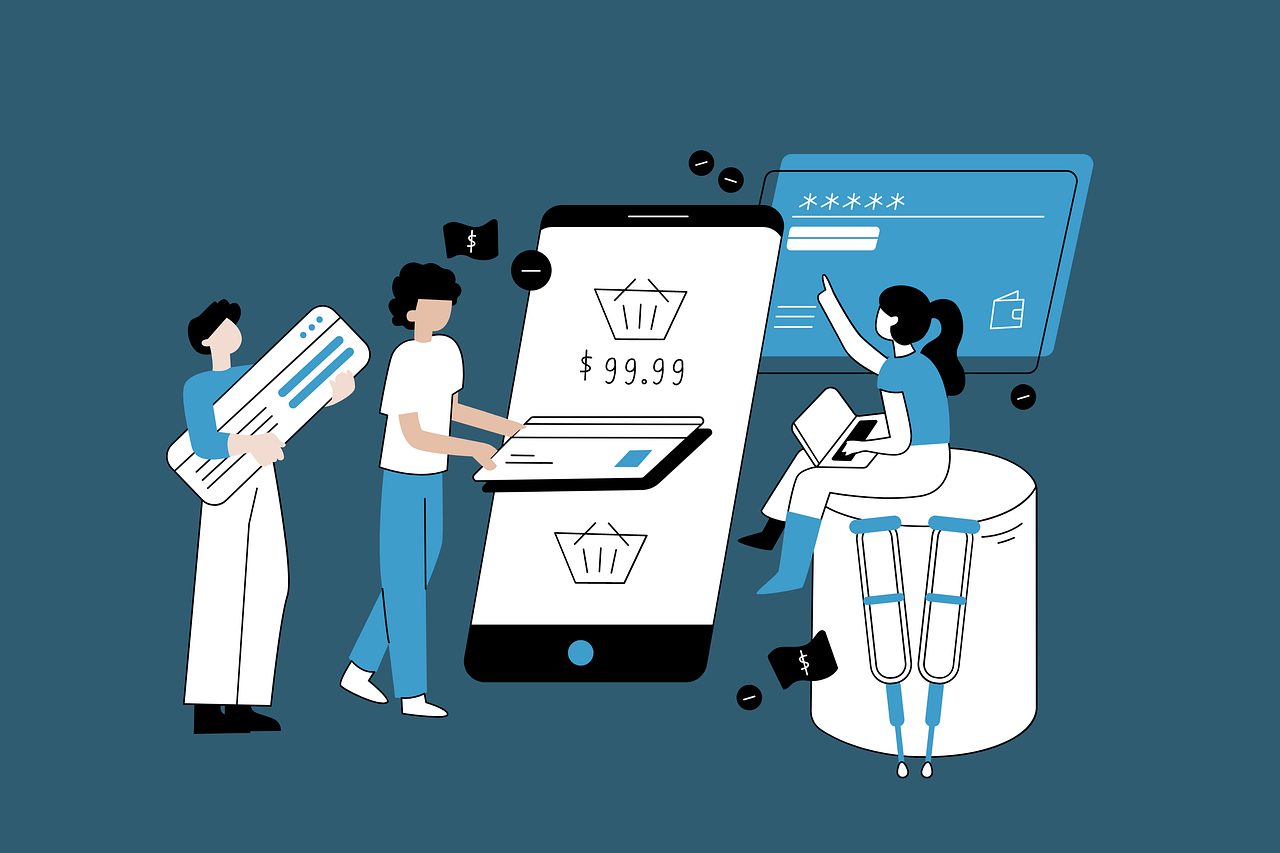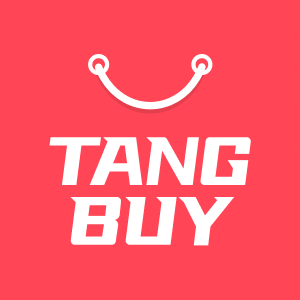How to Find Reliable Wholesale Jeans Suppliers for Your Business

Looking to source wholesale jeans that boost your profits and satisfy your customers? You need to find suppliers who truly have it all. They should provide classic fits, trendy new styles, eco-friendly options, and private label jeans. Consider these key facts:
Market Drivers & Trends | Stats & Insights |
|---|---|
Work-from-home & casual wear growth | People spend 35% more time at home. Casual sales went up by 28%. |
Demand for eco-friendly jeans | 73% will pay more for eco jeans. 47% want more recycled cotton. |
Premium & customizable denim | Jeans over $100 are up 28%. 42% want custom jeans. |
E-commerce boom | 64% buy jeans online. Online denim sales grew by 56%. |
When you source wholesale jeans, make sure your suppliers are legitimate. Order samples to check quality and do thorough research before purchasing. Building strong relationships and staying on top of trends are key to winning in the denim business.
Key Takeaways
Use trusted B2B marketplaces, trade shows, directories, and referrals to find good wholesale jeans suppliers.
Study market trends and know your target customers. This helps you pick jeans that sell well and meet what people want.
Always check suppliers by looking at their business licenses. Read reviews and ask for references before you buy.
Test product quality by ordering samples and checking the materials. Look at return policies to avoid bad products.
Talk about terms like minimum order amounts, prices, shipping, and payment methods. This helps protect your money and business.
Watch out for scam signs like very low prices, bad communication, or being rushed to pay fast.
Build strong relationships with suppliers by talking clearly, setting rules, and building trust.
Choose eco-friendly options and stay ready to change with new trends. This helps your business do well for a long time.


Source Wholesale Jeans
Getting wholesale jeans the right way is very important. It can help your business do well or not. There are different ways to get wholesale jeans. Each way has good points. Let’s look at the main choices so you can pick what works for you.
B2B Marketplaces
B2B marketplaces are a common place to get wholesale jeans. You can find many suppliers from many countries. These sites let you compare prices and styles easily. You can also check the minimum order size. Many people trust these sites. They check suppliers and help protect buyers.
Here’s a quick look at some top B2B marketplaces and what makes them special:
Marketplace | Key Stats & Features | Verification & Reliability Measures | Sourcing Channels Available |
|---|---|---|---|
Alibaba | $130B revenue in 2024; 14% of all B2B sales | Seller verification; translation in 18 languages | Online marketplace |
Global Sources | Since 1971; wide product selection | Business license checks; onsite inspections | Online, trade shows, industry publications |
Made-in-China | Works with SGS, TÜV Rheinland for audits | Verified suppliers with audit reports | Online expos, custom sourcing, trade services |
Carro | 70,000+ brands, 500,000 products | Platform scale implies reliability | Online marketplace |
Did you know that 59% of B2B buyers now buy more than a quarter of their things on online marketplaces? This shows that people trust these sites more now. You can buy wholesale jeans in big or small amounts. There are many styles to pick from, like classic, trendy, eco-friendly, or private label.
Tip: Always look at supplier reviews and ratings before you order. This helps you avoid problems and find good partners.

Trade Shows
Trade shows are another good way to get wholesale jeans. You can see the jeans up close and feel the fabric. You also get to meet suppliers in person. Many trade shows have suppliers who focus on special jeans like maternity, vintage, or custom styles.
When you go to a trade show, you can:
Compare different suppliers right there.
Check how good the jeans are.
Ask about order size and custom options.
Make friends with suppliers for better deals.
Big places like Guangzhou Xintang in China or the LA Fashion District in the USA are great for finding jeans. These markets let you order small amounts and try new styles. This is good if you want to sell to a special group of people.
Note: For vintage or heritage jeans, pick suppliers with the right tools and skilled workers. This helps you get real details and strong jeans.
Directories

Directories help you find and compare wholesale jeans suppliers fast. These lists have checked manufacturers, exporters, and wholesalers from many places. You can search by area, type of jeans, or order size.
Some popular directories are:
Online B2B platforms like Alibaba and FashionGo
Special directories for fashion and clothes
Local business lists in big denim cities
Directories are helpful if you want to find jeans for a special group. For example, you can look for suppliers with stretch fabric for maternity jeans or cool washes for vintage styles. Many directories show supplier ratings so you can check quality and trust before you contact them.
When you use directories, remember to:
Check for supplier certificates and audit reports.
Compare prices, order sizes, and custom options.
Contact a few suppliers to get prices and samples.
Pro Tip: Keep notes on how suppliers do. Look at delivery times, product quality, and how fast they answer you. This helps you make a list of good partners for your business.
No matter which way you choose, always compare prices, reviews, and what suppliers offer. Good sourcing is not just about the lowest price. You want good quality, trust, and choices. Big companies like Apple and Walmart use these ideas too. When you get wholesale jeans, build strong relationships and always look for ways to do better.
Referrals
Sometimes, the best way to source wholesale jeans is to ask people you trust. Referrals can save you time and help you avoid risky suppliers. When you talk to other business owners, you get real stories about their experiences. You can learn which suppliers deliver on time, offer good prices, and have quality jeans.
Here’s how you can use referrals to your advantage:
Ask in Industry Groups: Join online forums or social media groups for clothing sellers. People often share their favorite suppliers and warn about bad ones.
Talk to Local Retailers: Visit stores in your area. Ask owners where they source wholesale jeans. Many will share tips if you are friendly and honest.
Network at Trade Shows: When you attend trade shows, chat with other buyers. They might know hidden gems or suppliers who do not advertise online.
Reach Out to Business Mentors: If you have a mentor or know someone with experience in fashion, ask for their advice. They can point you to trusted contacts.
Tip: Always double-check any referral. Even if someone recommends a supplier, you should still order samples and do your own research.
Referrals help you find suppliers who may not show up on big directories or B2B sites. Some of the best deals come from word-of-mouth. You might discover a small factory that makes unique jeans or a wholesaler who offers private label options. These connections can help you source wholesale jeans that stand out in the market.
When you use referrals, you also build your own network. Over time, you will have a list of trusted contacts. This makes it easier to source wholesale jeans as your business grows.
Note: Keep track of every referral you get. Write down the supplier’s name, who referred them, and your experience. This helps you remember who to trust and who to avoid.
Referrals give you an edge. You get inside information that others may not have. Use this method along with other ways to source wholesale jeans. This will help you find the best suppliers for your business.

Research Market Trends
Understanding what your customers want helps you make smart choices and boost your profits. When you know the latest trends and who buys your jeans, you can stock the right styles and avoid slow sellers. Let’s break down how you can research market trends for your wholesale jeans business.
Identify Target Audience
You need to know who buys your jeans. Are they teens, young adults, or working parents? Maybe your customers care about eco-friendly denim or want the latest fashion. Surveys and interviews help you learn what your audience likes and why they buy certain jeans. These tools give you numbers and stories that show what matters most to your buyers.
Surveys collect numbers about what styles and fits people like.
Interviews and focus groups let you hear real opinions and reasons behind choices.
When you use both, you get a clear picture of your target audience.
This helps you pick the right jeans and plan your marketing.
Tip: Use online survey tools or ask questions on social media. You can also talk to customers in your store or at events.

Track Popular Styles
Trends change fast in the jeans market. You want to know what’s hot before your competitors do. Social media, fashion blogs, and online stores show you which styles are trending. You can also look at what influencers wear and what gets lots of likes and shares.
The global denim jeans market keeps growing because of new designs, patterns, and fits.
Social media and influencers shape what people want to buy.
More people spend money on jeans as their income grows.
E-commerce and online platforms make it easy for shoppers to see and choose different fits, like skinny, tapered, or athletic.
Market research uses big data and competitor tracking to see which styles sell best. Brands that follow trends and offer custom options often see more repeat orders and higher profits. For example, some brands saw a 25% jump in repeat orders and double-digit revenue growth by tracking and offering popular styles. Real-time tracking and faster production also help you respond quickly to new trends.

Analyze Competitors
Watching your competitors gives you an edge. You can see what styles they sell, how they price their jeans, and what customers say about them. This helps you spot gaps in the market and find ways to stand out.
Market share analysis and trend tracking show you where your business fits in.
You can use tools like social media, Google Trends, and competitor websites to gather information.
Look at their best sellers, customer reviews, and new product launches.
Note: Keep a list of your top competitors and check their updates often. This helps you stay ahead and adjust your strategy when needed.
When you research market trends, you make better decisions. You stock jeans that people want, set the right prices, and grow your business faster.

Verify Suppliers
Check Credentials
You need to trust your suppliers. Start by checking their credentials. Ask for business licenses and tax IDs. Also, ask for any industry certificates. These papers show the supplier is a real business. They also show the supplier follows the rules. If a supplier will not share these, be careful. This could be a warning sign.
Big companies use this step to avoid problems. For example, one global company checked supplier certificates and did audits. They had 20% fewer quality complaints. They also got better on-time deliveries. You can get good results by always checking credentials.
Here’s what you should look for:
Business license or registration
Tax identification number
Certificates for quality (like ISO)
Factory audit reports
Tip: Always ask for copies of these papers. Keep them in your files for later.
Read Reviews
Reviews tell you a lot about a supplier. You can find reviews on B2B marketplaces and business directories. You can also check social media. Look for patterns in what people say. Do buyers talk about late shipments or bad quality? Or do they say the service is fast and the jeans are great?
Reading reviews helps you spot problems early. One online store got 15% faster order speed after using third-party checks and reading reviews. They also made better relationships with their best suppliers.
When you read reviews, look at:
Delivery times
Product quality
Customer service
How problems are fixed
Note: Do not just look at the stars. Read the comments to learn more.

Request References
A good supplier will share references from other buyers. These references let you ask real customers about their experience. You can learn if the supplier delivers on time. You can also learn if they fix problems and keep promises.
Try asking these questions when you call a reference:
Did the supplier send what you ordered?
Was the quality as promised?
How did they fix any problems?
Would you buy from them again?
A food company had strict rules and wanted to avoid mistakes. They started asking for references and doing checks. This helped them follow safety rules and waste less.
Pro Tip: Always check with at least two references. This helps you get a better idea of what to expect.
By checking credentials, reading reviews, and asking for references, you lower your risk. You also find suppliers who help your business grow. These steps take a little more time, but they save you from big problems later.
Evaluate Communication
When you look for a wholesale jeans supplier, pay close attention to how they communicate with you. Good communication shows that a supplier is reliable and cares about your business. If a supplier answers your questions quickly and clearly, you can trust them more. If they take too long or give confusing answers, you might face problems later.
Here are some things you should watch for when you talk to a new supplier:
Response Time: Notice how fast the supplier replies to your emails or messages. A good supplier usually answers within 24 hours. If you wait days for a reply, that’s a warning sign.
Clarity: Check if the supplier gives clear and direct answers. You want someone who explains things in simple words. If you ask about prices or shipping, you should get straight answers, not vague replies.
Language Skills: Make sure you both understand each other. If the supplier uses poor grammar or you struggle to understand their messages, mistakes can happen. Clear language helps avoid mix-ups with orders or payments.
Willingness to Help: See if the supplier tries to help you solve problems. Do they answer all your questions? Are they patient when you ask for details or changes? A good supplier wants to work with you, not just make a quick sale.
Professionalism: Notice if the supplier acts polite and respectful. They should treat you like a valued customer. If they seem rude or rush you, think twice before working with them.
Tip: Keep a record of your conversations. Save emails and chat logs. This helps you remember what was promised and spot any changes in their behavior.
You can also test a supplier’s communication by asking a few extra questions. For example, ask about their return policy or how they handle late shipments. See if they give you a full answer or try to avoid the topic. You can even call them to hear how they speak on the phone. Sometimes, a quick call tells you more than a long email.
Here’s a simple checklist you can use:
Communication Factor | What to Look For | Red Flag Example |
|---|---|---|
Response Time | Replies within 24 hours | Takes days to respond |
Clarity | Clear, direct answers | Vague or confusing replies |
Helpfulness | Answers all questions | Ignores your concerns |
Professionalism | Polite and respectful | Rude or dismissive |
If you feel comfortable talking with a supplier, you will have fewer problems later. Good communication builds trust. It also helps you solve issues faster if something goes wrong. Always choose suppliers who make you feel heard and respected. This small step can save you a lot of trouble as your business grows.
Check Quality

Making sure your jeans meet high standards is key to building a strong business. You want your customers to love what they buy and come back for more. Here’s how you can check the quality of wholesale jeans before you commit to a big order.
Order Samples
Always start by ordering samples from your supplier. This step lets you see and feel the jeans before you buy in bulk. When you get samples, you can check the fit, stitching, and overall look. You can also measure the jeans to make sure they match the size chart.
During sample testing, you collect important numbers like fabric weight, length, and seam strength. For example, you might measure the fabric in grams per square meter or check how strong the seams are. These numbers help you spot any problems early. If the jeans shrink too much after washing or the color fades, you’ll know before you place a big order.
Tip: Take notes on each sample. Write down how the jeans fit, feel, and look after washing. This helps you compare different suppliers and pick the best one.
Inspect Materials
The materials in your jeans matter a lot. Good denim usually has cotton, elastane for stretch, and indigo dye for color. You also want strong metal parts like zippers and buttons. When you inspect materials, look for even color, smooth stitching, and sturdy hardware.
You can use simple tests to check quality:
Stretch Test: Pull the fabric gently to see if it bounces back.
Color Test: Rub a white cloth on the jeans to check for color transfer.
Stitch Check: Look for even, tight stitches with no loose threads.
Manufacturers use numbers to check quality, like fabric weight, thickness, and color fastness. These tests show if the jeans will last and keep looking good. When you focus on these details, you help your customers get jeans that fit well and hold up over time.
High-quality jeans have fewer defects and better fit, which makes customers happier.
Brands that listen to customer feedback and improve their materials see more repeat buyers.
A store that switched to better denim saw more sales and happier reviews.
Review Return Policies
Before you buy, always ask about the supplier’s return policy. A clear return policy protects you if the jeans don’t meet your standards. Good suppliers will let you return or exchange products with defects or quality issues.
Quality checks often follow steps like pre-production sample checks, inspections during production, and final reviews before shipping. These steps help catch problems like bad stitching, color issues, or weak zippers. Some factories use the 4-Point American System to score jeans on appearance, feel, construction, and color. This system helps everyone agree on what “good quality” means.
Note: Choose suppliers who offer fair return policies and follow clear inspection steps. This shows they care about quality and want to build trust with you.
Checking quality takes time, but it saves you money and stress later. When you order samples, inspect materials, and review return policies, you set your business up for success. Your customers will notice the difference—and they’ll keep coming back for more.

Negotiate Terms
Minimum Orders
When you talk to a new supplier, the first thing you should ask about is their minimum order quantity (MOQ). This is the smallest number of jeans you must buy in one order. MOQs help suppliers manage costs and keep production running smoothly. For you, the right MOQ can help you control your budget and avoid having too much stock.
You might see MOQs set by style, color, or even by the total value of your order. Some suppliers let you mix different styles to meet the MOQ. Others want you to order a certain number of each style. If you are just starting out, ask if the supplier can offer a lower MOQ for your first order. Many suppliers will work with you, especially if you plan to order more in the future.
MOQs help you keep enough jeans in stock for your store displays.
Higher MOQs for reorders can help you save on shipping and handling costs.
Some suppliers use technology to set flexible MOQs for each product.
Tip: Always check the MOQ before you agree to anything. If the MOQ is too high, try to negotiate or look for another supplier.
Pricing
Getting the right price for your jeans is key to making a profit. Most suppliers use a cost-plus pricing model. They add up all their costs—like making, storing, and shipping the jeans—then add a markup so they can make money. You should know your own costs too, so you can set prices that cover your expenses and leave room for profit.
Here’s a simple way to handle pricing talks:
Make a list of several suppliers. Compare their prices and terms.
Contact each supplier with clear details about what you want. Ask for a price breakdown, MOQ, payment terms, and shipping info.
Follow up to make sure they got your request.
Review all the quotes you get. Look for hidden fees or extra costs.
Ask for samples from your top choices. Check the quality before you decide.
You can also ask for discounts if you order more or if you become a regular customer. Some suppliers offer better prices for big orders or for long-term buyers.
Note: Always get the final price in writing. This helps avoid surprises later.

Shipping
Shipping is a big part of your total cost. You need to know how your jeans will get to you, how long it will take, and how much it will cost. Some suppliers include shipping in their prices. Others charge extra. Always ask for a full breakdown.
Check if the supplier ships by air, sea, or courier. Air is faster but costs more. Sea is cheaper but takes longer.
Ask about tracking and insurance. You want to know where your jeans are and that they are safe.
Find out who pays for customs and import fees. Sometimes you pay, sometimes the supplier does.
You can also talk about shipping times. If you need jeans fast, ask if the supplier can speed up the process. Good suppliers will keep you updated and help solve any problems.
Tip: Always plan for shipping delays. Order early so you do not run out of stock.

Payment
When you buy wholesale jeans, payment is a big deal. You want to pay in a way that keeps your money safe and helps you build trust with your supplier. Let’s look at the most common payment methods and how you can use them to your advantage.
Popular Payment Methods:
Method | How It Works | Risk Level | Best For |
|---|---|---|---|
Bank Transfer | You send money directly to supplier | Medium | Trusted suppliers |
PayPal | Online payment with buyer protection | Low | Small orders, samples |
Credit Card | Pay with your card, can dispute | Low | First-time transactions |
Letter of Credit | Bank holds funds until goods ship | Very Low | Large orders, overseas |
Escrow Service | Third party holds money until delivery | Very Low | New suppliers |
You might see suppliers ask for a bank transfer. This is common, but you should only use it with suppliers you trust. PayPal and credit cards give you more protection if something goes wrong. For big orders, a letter of credit or escrow service keeps your money safe until you get your jeans.
Tip: Always start with a safe payment method when you work with a new supplier. You can switch to bank transfers later if you build trust.
How to Negotiate Payment Terms:
You don’t have to accept the first payment terms a supplier offers. You can ask for better options. Here are some ways to do that:
Split Payments: Pay a small deposit first, then pay the rest after you get your order.
Net Terms: Ask if you can pay 30 or 60 days after you get your jeans. Some suppliers offer this to good customers.
Discounts: See if you get a discount for paying early or for large orders.
You should always get the payment agreement in writing. This helps you avoid confusion later.
Protect Yourself from Scams:
Scams can happen, especially with overseas suppliers. Here’s how you can stay safe:
Never send full payment to a new supplier before you get your order.
Use payment methods with buyer protection.
Double-check the supplier’s bank details. Scammers sometimes send fake invoices.
Keep all payment records and emails.
Note: If a supplier pressures you to pay fast or only accepts risky payment methods, walk away. Trust your gut.
Paying for wholesale jeans does not have to be scary. When you use safe payment methods and clear terms, you protect your business and build strong supplier relationships. Always ask questions and make sure you feel comfortable before you send any money.
Avoid Scams
Finding a good wholesale jeans supplier is exciting, but you must be careful. Scams and fake products are real problems, especially with overseas suppliers. Let’s see how you can spot trouble, pay safely, and protect your business.
Spot Red Flags
Scammers use the same tricks again and again. If you know what to look for, you can stay safe. Here are some warning signs:
The supplier’s website looks messy or has many spelling errors.
Prices are super low. Very cheap jeans can mean fake or bad quality.
The supplier will not give business licenses, tax IDs, or references.
They rush you to pay or only want risky payments like wire transfers.
You cannot find real reviews or the reviews sound fake.
The supplier avoids video calls or will not show their factory.
Tip: Always listen to your gut. If something feels wrong, stop and check again.
Use Safe Payments
Paying in a safe way helps protect your money. You have many choices to keep your business safe from scams. Here’s what you can do:
Use secure payment gateways or digital wallets with fraud tools like encryption.
Pick payment methods with buyer protection, like PayPal, credit cards, or escrow.
Ask if your supplier uses PCI DSS-compliant processors for safe card data.
Look for extra safety steps like address checks, two-factor codes, and CVV checks.
Take EMV chip card payments if you sell in person. This lowers fraud and protects you.
You can also use real-time fraud tools to watch for strange activity. These tools catch odd payments and help you act fast if there is a problem. If you see a chargeback, check it right away and keep all your records.
Note: Never send full payment to a new supplier before you get your order. Start with a small deposit and use safe payments until you trust them.
Protect Legally
Legal protection is just as important as safe payments. You want your business to follow the rules and keep customer data safe. Here’s how you can protect yourself:
Always get contracts in writing. Include product details, prices, delivery times, and return rules.
Make sure your supplier gives business licenses and quality certificates.
Follow data privacy laws, like GDPR, to keep customer info safe.
Teach your staff to spot scams and use good cybersecurity habits.
Make a plan for fraud. Know how to block bad payments, tell customers, and report problems.
If you do these things, you lower your risk of scams and make your business safer. Legal rules and safe payments work together to protect you and your customers. Stay alert, use smart tools, and always check before you agree to anything. Your jeans business will be safer!
Build Relationships
Building strong relationships with your wholesale jeans suppliers can make your business stand out. When you work well with your partners, you get better products, faster service, and more trust. Let’s look at how you can do this.
Communicate Clearly
Clear communication is the foundation of any good partnership. When you talk openly with your suppliers, you avoid confusion and solve problems quickly. You should always share your needs, goals, and feedback. This helps your supplier understand what you want and how they can help.
Here’s what happens when you communicate clearly:
You can track supplier performance using simple scorecards or KPIs.
Your jeans arrive faster and with better quality.
You avoid mistakes by setting clear standards for quality, delivery, and price.
You spot problems early and fix them before they get bigger.
You motivate your suppliers to improve by giving feedback and rewards.
Your customers stay happy, and your business grows stronger.
Tip: Keep your messages short and direct. Use email, phone calls, or even video chats to stay connected.
Set Expectations
Setting expectations early helps everyone know what to do. When you tell your supplier exactly what you want, you get better results. You should talk about order sizes, delivery dates, quality checks, and payment terms. Write these details down so there is no confusion later.
A simple checklist can help:
Share your quality standards and size charts.
Agree on delivery times and shipping methods.
Set clear prices and payment rules.
Plan for what happens if something goes wrong.
When you set expectations, you help your supplier do their best work. This leads to fewer mistakes, lower costs, and faster deliveries. You also build trust because everyone knows what to expect.
Note: Review your agreements often. Update them if your needs change or if you find a better way to work together.
Foster Trust
Trust is the secret to long-term success in the jeans business. When you trust your supplier, you work as a team. You both want to win. You can build trust by being honest, keeping your promises, and showing respect.
Here are some ways to foster trust:
Use tools that track and reward good work, like referral systems or scorecards.
Check in with your supplier often. Share feedback and celebrate wins together.
Stay open about prices, inventory, and orders. This keeps things fair and clear.
Offer extra value, like sharing trend reports or inviting your supplier to special events.
Use software to keep your communication personal, even as your business grows.
Building trust takes time, but it pays off. Suppliers who trust you will go the extra mile. They will help you solve problems, offer better deals, and support your growth. In the end, strong relationships help you stand out in the crowded denim market.
You can run a good jeans business if you follow some smart steps. First, do market research to learn what people want. Always check each supplier before you buy from them. Test the quality of the jeans before making big orders. Be ready to change your orders when trends shift. Use technology to see which jeans sell best.
Change your products often so you have new styles for each season.
Make friends with your suppliers. This helps you get better prices and faster shipping.
Pick eco-friendly jeans and try to recycle or reuse materials when you can.
Watch out for scams and trust your gut if something feels wrong. Take action if you see a problem. If you care about quality and the environment, your business can do well for a long time.

FAQ
How do I know if a wholesale jeans supplier is legit?
Check for business licenses, tax IDs, and real reviews. Ask for references from other buyers. If a supplier avoids your questions or rushes you, that’s a red flag. Trust your gut and always order samples first.
What is the usual minimum order for wholesale jeans?
Most suppliers set a minimum order quantity (MOQ). This can range from 50 to 500 pairs. Some let you mix styles to meet the MOQ. Always ask before you order.
Can I get custom or private label jeans from wholesalers?
Yes! Many suppliers offer custom labels, tags, and even unique designs. You can ask about private label options when you contact them. This helps your brand stand out.
How do I avoid getting scammed when paying suppliers?
Use safe payment methods like PayPal, credit cards, or escrow. Never pay the full amount upfront to a new supplier. Keep all payment records and double-check bank details before sending money.
What should I look for when checking jeans quality?
Order samples and check the fabric, stitching, and fit. Look for strong seams, even color, and sturdy zippers or buttons. Wash the jeans to see if they shrink or fade.
How can I find eco-friendly or sustainable jeans suppliers?
Search for suppliers who use organic cotton, recycled materials, or eco-friendly dyes. Ask for certifications like GOTS or OEKO-TEX. Many directories let you filter for sustainable options.
Do I need a business license to buy wholesale jeans?
Most suppliers require a business license or tax ID. This shows you run a real business. It also helps you get better prices and avoid sales tax in some cases.
How do I handle returns or defective jeans?
Ask about the supplier’s return policy before you order. Good suppliers accept returns for defects or wrong items. Always get the policy in writing and keep records of your orders.

TangBuy: A Smarter Way to Dropship in 2025
If you're looking to stay competitive with dropshipping in 2025, speed and trend-awareness are key. TangBuy helps you stay ahead with real-time product trends, fast fulfilment, and factory-direct sourcing. With over 1 million ready-to-ship items, 24-hour order processing, and seamless Shopify integration, TangBuy makes it easier to test, scale, and succeed in today's fast-moving eCommerce landscape.
See Also
Selecting Trustworthy Bulk Shoe Suppliers For Affordable Pricing
Finding Reliable Wholesale Party Supplies To Boost Your Earnings
Deciding Between Dropshipping And Wholesale Options For Business

